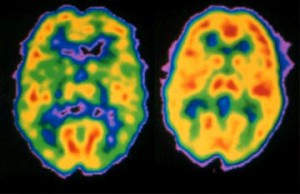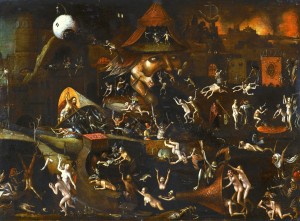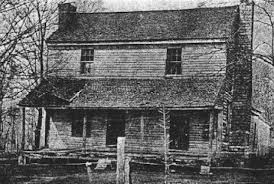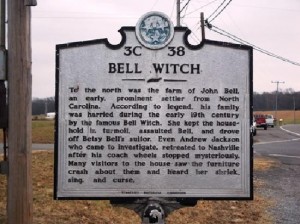“The Edge, there is no honest way to explain it because the only people who really know where it is are the ones who have gone over.”—Hunter S. Thompson
Wilson Van Dusen was a clinical psychologist at the Mendocino State Hospital in California between 1968 and 1974 where he worked with all manner of the mentally ill. During that time, he endeavored to gain a greater understanding of what his patients who suffered from hallucinations were going through by attempting to engage the voices that some of them heard in conversation.* The results that he got went far beyond anything he had bargained for and were far stranger than just about anyone could have predicted.
 In the chapter “The Presence of Spirits in Madness” from his book The Presence of Other Worlds, Van Dusen begins by clearing up some of the misconceptions that many people have about the mentally ill. Most people think that those who experience hallucinations are all so far gone that the taxis won’t take you there. The truth is that most of them are completely aware that no one else is experiencing what seems completely real to them, and some manage to live with their hallucinations for quite some time in the everyday world without anyone knowing what they’re dealing with. It is supposed that all of them are eventually overcome by their illness, but how would we really know? There may be such a thing as a functioning hallucinator.
In the chapter “The Presence of Spirits in Madness” from his book The Presence of Other Worlds, Van Dusen begins by clearing up some of the misconceptions that many people have about the mentally ill. Most people think that those who experience hallucinations are all so far gone that the taxis won’t take you there. The truth is that most of them are completely aware that no one else is experiencing what seems completely real to them, and some manage to live with their hallucinations for quite some time in the everyday world without anyone knowing what they’re dealing with. It is supposed that all of them are eventually overcome by their illness, but how would we really know? There may be such a thing as a functioning hallucinator.
I can personally back Van Dusen up on that since I spent a number of hours in the maximum security ward of a state mental hospital for academic purposes several years ago. (No, I wasn’t a patient…smartass.) I was quite surprised at how lucid most of these people who had to be locked up for their own protection were most of the time. There was, however, one man that I avoided having any contact with because he was always engaged in conversation with someone that none of the rest of us could hear. Sometimes he calmly conversed, sometimes he argued, sometimes he laughed, and sometimes he cried. I thought that this guy was so totally gone that he didn’t even know that I was there. Then one day I accidentally said hello to him because I had just arrived and saying “Hi” to someone is just sort of a reflex in that situation. I immediately realized my mistake and braced myself for his reaction. I don’t know what I thought was going to happen, but all that did happen was that he said “Hey man,” and then went back to his conversation with whoever he could hear that we can’t. I was completely taken aback at discovering that this person who I thought was living completely in his own little world was actually quite aware of what was going on around him. He just ignored it because whatever was going on in his private world was clearly of far more interest to him
Okay, enough about me. Back to Van Dusen.
The way that he was able to interact with these hallucinations was to use the patient as a go-between. The hallucinations could hear him, and the patient would report their responses to his questions and observations. Van Dusen quickly realized that he could easily categorize the voices into one of two groups: higher and lower order. There was no in-between.
The lower order voices were complete thugs and bullies whose only purpose was to torment the patient mercilessly. They naturally knew everything that there was to know about their victim and used all of it against them. They insulted them and called them every name in the book. They would suggest all varieties of lewd acts and then excoriate the person for thinking about them. They would harp on past misdeeds endlessly, especially the ones that patients felt the most remorse over. They would tell the person to commit some act and threaten them if they refused. If they gave in and did what they were told, they would be mocked for being so stupid and gullible. At times, patients would hear one or more voices plotting to kill them as if it were behind their back. Sometimes the voices told them straight out how they were planning to murder them. One man heard dozens of voices all screaming at him simultaneously and was so traumatized when this happened that he had to be sedated. Some were also able to inflict physical pain and used this as a way of coercing their victims into doing as they were told. In short, they’re totally sadistic douchebags.
Van Dusen quickly noticed that none of the hallucinations of the lower order were particularly bright, even if the patient was, which struck him as a little odd. They also seemed to have no personal memory, identity or knowledge of who or what they were, but would readily accept any role suggested to them. When asked if they were demons, they would enthusiastically confirm that they were. When it was insinuated that they might be spirits, they would affirm this as well. One claimed to have been an engineer, but further questioning revealed that it knew no more than basic arithmetic. They could also perfectly imitate and impersonate any individual ever known to the patient, and they used this ability frequently as part of their arsenal to torture and confuse their victim.
The hallucinations that Van Dusen classified as higher order were different in every way. First, they rarely spoke to the patient and preferred to appear in what could be considered visions where they transmitted information mostly through symbolism, much of which was completely lost on the recipient. There were also times when visual hallucinations occurred with the lower order, but these were more mundane. What the patients saw were usually ordinary, if somewhat scary looking, people in conjunction with the abusive voice, kind of like Zachry and Old Georgie in Cloud Atlas. Higher order beings were also reported much less frequently, making up only about 20% of hallucinations at most. Much of what they attempted to convey seemed to be spiritual in nature, while lower order entities were always indifferent or hostile toward religious or spiritual ideals. One being who appeared to a patient as a beautiful woman showed him thousands of symbols that demonstrated to Van Dusen that she possessed a level of understanding of religious and mythological concepts far beyond the knowledge of the relatively uneducated recipient. This “woman” identified herself to Van Dusen as “an emanation of the feminine aspect of the Divine.” When Van Dusen later referenced her divine nature, she denied this and stated that she was merely an emanation of the Divine, in contrast to the boastful nature of the lower order. After their conversation, the patient asked Van Dusen if he could tell him what the two of them had been talking about. He hadn’t understood any of it. In general, the higher order beings were helpful, supportive, and respectful of the person’s feelings and freedom.
 Van Dusen frequently seems to be talking about these hallucinations as if they are real, separate entities rather than the simple products of delusional minds, and there’s good reason for this. Years after these interviews with patients, Van Dusen became fascinated with the 18th century Swedish scientist, philosopher and Christian mystic Emanuel Swedenborg. He was struck by the similarities between Swedenborg’s descriptions of the higher and lower spirits and how well they fit the nature of the two orders of beings in his patients’ hallucinations.
Van Dusen frequently seems to be talking about these hallucinations as if they are real, separate entities rather than the simple products of delusional minds, and there’s good reason for this. Years after these interviews with patients, Van Dusen became fascinated with the 18th century Swedish scientist, philosopher and Christian mystic Emanuel Swedenborg. He was struck by the similarities between Swedenborg’s descriptions of the higher and lower spirits and how well they fit the nature of the two orders of beings in his patients’ hallucinations.
In Swedenborg’s theology, there are hierarchies of Heaven and Hell and humanity exists in the confluence of the two and is influenced by both sides. This constant pull between good and evil and which path we choose to follow is what makes up the spiritual life of humanity. The idea that humanity is constantly being pulled in both directions of good and evil without our knowledge is not a new one, but Swedenborg’s personal take on this has a twist. His lower order spirits are just as unaware of us as we are of them. They have no idea that they are exerting an evil influence on us most of the time, but occasionally they find out.
According to Swedenborg, these are spirits in the most literal sense of the word. They are the souls of the dead whose memories have been wiped clean and now exist in a state of not knowing who they really are or where they came from, which is exactly what Van Dusen found in lower order hallucinations. (This is also eerily reminiscent of a being who called himself Mr. Appel, with whom John Keel had some interesting experiences in the late 1960s, but that’s a story for another day.) It’s actually a little more complicated than that, which is why you should read the next paragraph.
A person’s actions and character determine which sorts of spirits become attached to them. Good people attract good spirits and bad people attract bad ones, although Swedenborg also implies that we all have both sorts attached to us to some degree. It is our habits that strengthen the influence of one type while diminishing it for the others. Though both the human and their attached lower spirits are unaware of one another, they experience a sort of shared existence. The memories of the person become the memories of the spirit, who is walking around in a world not that different from our own. For each of their attached person’s worldly experiences, they have a corresponding spiritual experience. Interesting concept, but I’m not really clear on what makes these similar realities Heaven for good spirits and Hell for bad ones. Any Swedenborg experts out there please feel free to enlighten me on what I’m missing here. And unlike any Christian theologian, mystic or philosopher that I’m aware of, Swedenborg claims that all “angels” and “demons” were once human, in stark contrast to mainstream Christian theology. Some would even call that heresy, and some did. Many of his books had to be published in other countries because of this.
Swedenborg states that there is a barrier between the spirits and human consciousness. Were a lower spirit to become aware of his attachment to a human and learn the true source of its memories, it would torment this person constantly and put them in danger of losing their sanity and perhaps even their life. They might also be able to gain control of a person and force them to do and say things against their will, aka demonic possession. This, Van Dusen realized, was precisely what had happened to each of his patients. A seemingly outside entity, but one that knew every last detail about the patient and little else, had attacked them from within and destroyed their sanity. Of course, a purely hallucinatory mental construct would also know everything about them.
It probably goes without saying that Swedenborg was and is not the only person to blame spirits for some mental illnesses. Today we generally consider such people to be/have been primitives and superstitious savages, and a lot of them are/were, though I don’t mean that as the insult that most will probably perceive it to be. There have been more than a few “civilized” individuals who have spent time with these people and come back with stories that, if they are to be believed, might make us reevaluate or own beliefs on the subject of spirits. These peoples’ way of life may have enabled them to remain aware of forces that our higher civilization has caused us to lose the ability to perceive.

Van Dusen wasn’t sure what could have brought down this barrier between his patients and the spirit world, but he suspected that it might have something to do with the social withdrawal which is one of the first symptoms of the onset of schizophrenia. By retreating into their own mental world and brooding on their deteriorating state of mind, he speculated that they might have torn a hole through that veil. What was not known by Van Dusen or anyone else at the time is that schizophrenia is a medical condition caused by an excess of the neurotransmitter dopamine, a chemical in the brain so important to so many different brain functions that entire careers have been devoted to its study. What role dopamine might play in opening up the brain to non-ordinary states of perception is officially unknown as no reputable neuroscientist is going to risk his funding by studying such a preposterous and controversial idea. There is, however, quite a bit of anecdotal data and amateur research that has been done in this area, but again, that’s a story for another day.
There are other factors involved in whether or not a person may be at a higher risk for schizophrenia, such as a genetic predisposition and stress factors, but dopamine is believed by most to be the real culprit. Much like a weak immune system may be genetic, and stress may weaken it further, ultimately it’s a virus that causes the flu. Those other things just make a person more likely to catch it.
Van Dusen also found that higher order spirits were aware of the presence of the lower order and had power over them to some extent, which Swedenborg also maintained. The same was not true of the lower order. They were unaware that the higher order even existed. Swedenborg’s higher order informed him that the lower order served the purpose of bringing to light a person’s shortcomings, which may explain why they didn’t just get rid of them wherever they found them. They could certainly relieve a lot of suffering were they so inclined, or perhaps allowed. In one case, Van Dusen recommended that a patient embrace these higher spirits, whom the patient was afraid of for some reason. When he did, the voices that the man had heard plotting his death went away, so maybe the higher order would do more to help if they could get a little more cooperation from our end.
Before you start thinking that Swedenborg might have been some sort of prophet, I have to point out that he also claimed to have been given information in his visions that all of the planets and even the moon were populated with humanoid-type beings. Considering what we now know about our solar system, that seems pretty unlikely. Remember what I’ve said in the past about psychic visions being, at least in part, the realm of the Trickster. (Life Imitates Art on the Brooklyn Bridge, An Alien by Any Other Name Part 2) For every piece of verifiable information or potentially useful insight, at least some of the “higher knowledge” that visionaries have had imparted to them would clearly make better fertilizer than philosophy.
As closely as Van Dusen’s findings reflect Swedenborg’s spiritual doctrines, there have been others who have claimed to have access to higher spiritual knowledge and have just as much credibility, however much that is, who would disagree with much of Swedenborg’s theology. Alan  Kardec’s spirit contacts denied the reality of any sort of spirit possession on the grounds that it violated a person’s freewill and so would never be permitted. The kahunas of Hawaii believe that the soul exists on three levels, and the lower level can sometimes assume control, usually to the detriment of the individual. Other mystics have assured us that there is no such thing as Hell and that only human minds could come up with such an appalling concept as eternal damnation. Reincarnation is a far more commonly espoused precept for explaining how souls make spiritual progress while also being rewarded or held accountable for their past actions. Hypnotic past life regression affirms this, but hasn’t turned up anything that I’m aware of that backs up Swedenborg’s claims.
Kardec’s spirit contacts denied the reality of any sort of spirit possession on the grounds that it violated a person’s freewill and so would never be permitted. The kahunas of Hawaii believe that the soul exists on three levels, and the lower level can sometimes assume control, usually to the detriment of the individual. Other mystics have assured us that there is no such thing as Hell and that only human minds could come up with such an appalling concept as eternal damnation. Reincarnation is a far more commonly espoused precept for explaining how souls make spiritual progress while also being rewarded or held accountable for their past actions. Hypnotic past life regression affirms this, but hasn’t turned up anything that I’m aware of that backs up Swedenborg’s claims.
I know what to make of Van Dusen. He was a very intelligent, highly educated, compassionate and open-minded man who was seeking a better understanding of the world that he and his patients lived in. His fascination with and admiration for Swedenborg may have caused him to overlook some of this man’s more quirky and highly improbable assertions, but Van Dusen would hardly be the first to fall into that category.
I find myself not knowing quite what to make of Swedenborg. As is almost always the case with mystics, some of what they have to say I find quite compelling, but a lot of it sounds like they’re having some hallucinations of their own. I think that sometimes there’s a fine line between genius and wack-job when it comes to the paranormal, and most of these guys seem to be straddling that fence a lot of the time.
Oh well. Such is the nature of the shaman.
____________________________________________________________________________________
*In case you’re wondering why a respected clinical psychologist would willingly get involved in such a crazy undertaking, you should know that many psychologists, psychiatrists and doctors know a lot more about the bizarre and mysterious than you would probably suspect. They usually stumble upon it quite by accident through their patients. For one of the best, most interesting and enlightening examples of how this happens, check out Many Lives, Many Masters by Dr. Brian Weiss, Chairman Emeritus of Psychiatry at Mount Sinai Medical Center in Miami. That book is like a dose of Prozac on a rainy day.



 Once when some of the Bell children were sitting on a sled, she told them to hold tight and then pulled it around the house three times “at great speed,” which they doubtless enjoyed. Another time, when Betsy and some other children were playing in what has come to be known as the Bell Witch Cave, a little boy became stuck between some rocks. The now familiar voice announced “I’ll get him out,” and the boy felt two hands grab him and pull him free.
Once when some of the Bell children were sitting on a sled, she told them to hold tight and then pulled it around the house three times “at great speed,” which they doubtless enjoyed. Another time, when Betsy and some other children were playing in what has come to be known as the Bell Witch Cave, a little boy became stuck between some rocks. The now familiar voice announced “I’ll get him out,” and the boy felt two hands grab him and pull him free.

